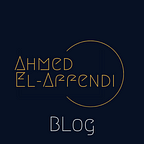Wild IoT in Sudan
Technology is capable in utilizing wildlife for business and fix the environment itself. Sudan is rich with not only the domestic animals, but also with wild animals. Both the market of internet of things and the wildlife business have a great value and many opportunities. From these technologies is the “internet of things” also know as “IoT”. The IoT can redefine the Dinder National Park.
The Sudanese Wildlife is one of the most diverse in the MENA region. It consists of many interesting animals whether they went extinct, endangered, or are alive today.
You can visit the following links to know more about wildlife in Sudan:
A spotlight on IoT:
Internet of things systems consist mainly of a micro-controller, sensor, actuator, an internet connection, and an interface. The micro-controller is a mini computer, which is mainly made by Arduino or Raspberry Pi. As for the interface it may be an application or a website that is used to enable people to interact with the system.
The Market size of IoT in 2019 in Middle East and Africa according to International Data Corporation (IDC) is around $8.5 billion in multiple uses and $17.63 billion by 2023. As for the Global market size of IoT is around $190 billion in 2017 and is expected to grow by 24.7% in 2025 according to Marketwatch.
A spotlight on Wildlife business:
I mean by Wildlife business the following: zoos, national parks, trophy hunting, circuses, clothing and furniture from wild animals materials, cuisine dishes from wild animals’ meat like ostriches in Africa, or kangaroo steak in Australia.
The Wildlife tourism(national parks and zoos) global value is $120 billion in 2018 according to Australian Leisure Management. As for the illegal global trade of wild animals (dead and alive) has an annual revenue of $23 billion according to the World Economic Forum(WEF).
Business opportunities:
Luxurious Clothing and furniture from wild animals’ materials: bags, pillows, rugs, accessories, jackets, shoes, hats, shirts.
Also the concept of zoos, national parks can be replicated all around Sudan.
Arabian Horses are very admirable by the British Equestrians and other Western Nations. It was even sent as a gift to Napoleon Bonaparte, and was ridden by George Washington. This is a domestic animal, so what do you think about the wild ones?!
There’s no loss in a wild animal dead or alive: leather, decoration, or PREMIUM fertilizer.
Usage of IoT in Dinder National Park and other areas:
In order to gather data from animals to monitor them and get benefits from them, we have to attach small tiny and harmless chips into their bodies. Not the whole population of animals, but the ones that reside inside zoos, and national parks.
Moreover, we don’t need the lift of sanctions from Uncle Sam or his relatives in Europe to bring the devices necessary to build these systems. The IoT devices are already being sold in Sudan and are imported mainly from the amazing India with very affordable prices. As for the developers, there’s plenty of them inside Sudan!
The applications of IoT include:
- Blood pressure systems for detecting threatened animals and dead animals to skin them before they even decompose.
2. Temperature sensors to detect if they enter human-populated facility and send drones with sleeping darts to immobilize the stray animals.
3. Temperature sensors to detect if they enter there’s fire in their habitat and send drones with water to put down the fire.
4. IoT Bracelets with blood pressure, and geographic location sensors for visitors of wildlife facilities to help anyone who is in danger or arrest anyone with malicious intentions.
And the examples go on and on:
In conclusion, IoT and wildlife can be combined together to create value for the community and environment.
